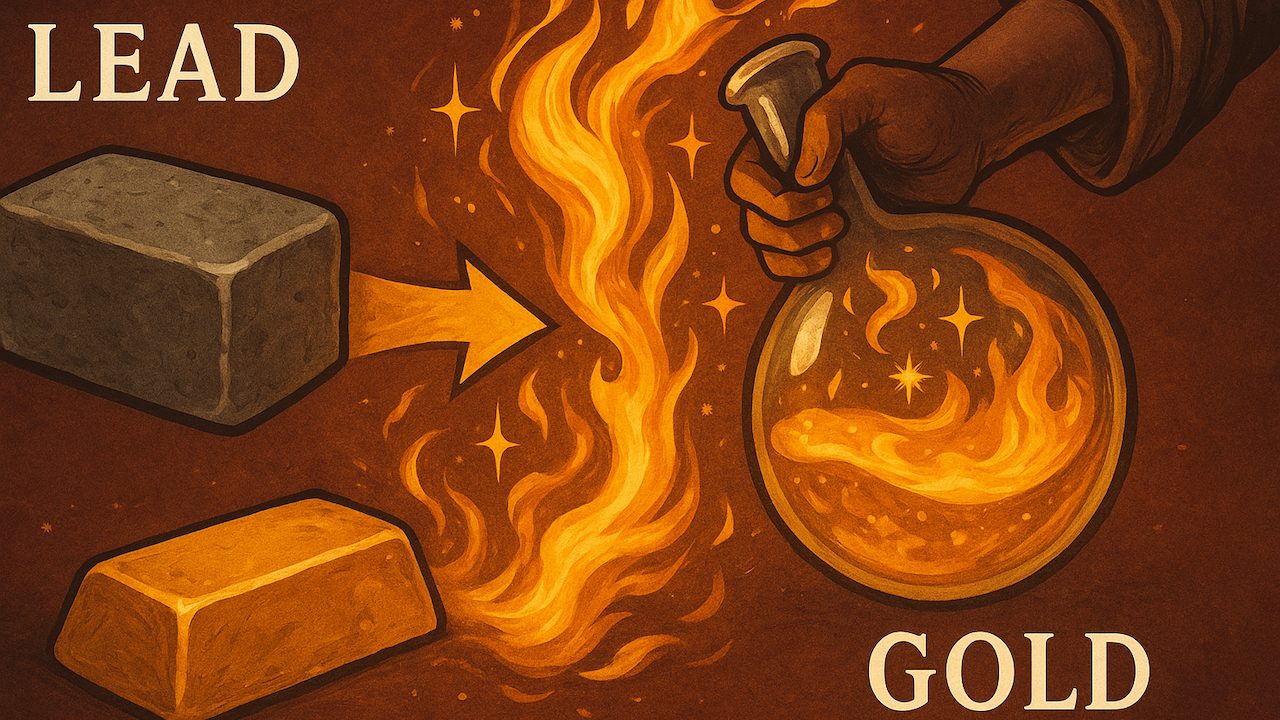(Mike Maharrey, Money Metals News Service) This is the stuff of dreams. Scientists have turned lead into gold!
Since ancient times, people have been trying to figure out how to transform common metals such as lead or iron into gold.
Alchemy originated in Egypt in the first century. It became a popular endeavor in the Middle Ages. At the time, people believed there was a “Philosopher’s Stone,” an elusive substance with transformative powers, including the ability to transform or purify metals.
Of course, nobody ever discovered that substance, but people did learn physics, and that has led to the transformation of lead into gold.
It happened at the Large Hadron Collider (LHC) in Geneva, Switzerland, where the ALICE collaboration (A Large Ion Collider Experiment) detected the transmutation of lead into gold.
ALICE’s central mission is to study the quark–gluon plasma (QGP)—a state of matter believed to have existed microseconds after the Big Bang, where quarks and gluons were not confined within protons and neutrons. The LHC particle accelerator is a vital tool in this collaboration.
I don’t know what any of that means, but that’s how the interwebs described it, and I thought it was important to include for any sciency folks who might read the article.
Anyway, alchemists back in the day primarily focused their efforts on turning common substances into gold using chemistry. Needless to say, they never figured it out. However, with the advancement of physics, scientists discovered that heavy elements do transform into other elements naturally or through radioactive decay — or in a lab under a bombardment of neutrons or protons.
According to Phys.org, scientists have created gold in this way before, however, the ALICE collaboration has now measured the transmutation of lead into gold by a new mechanism involving near-miss collisions between lead nuclei at the LHC.
I have to admit, it wasn’t until today that I realized this was a thing. But it’s pretty cool, right? We can literally make gold! We’re all going to be rich!
Well, not so fast.
According to Phys.org, “the LHC currently produces gold at a maximum rate of about 89,000 nuclei per second from lead–lead collisions at the ALICE collision point.”
Yeah. That was meaningless to me as well. But according to AI calculations, it would take about 33.9 billion years to create one ounce of gold at that rate.
In other words, don’t hold your breath. As Phys.org put it, “While the dream of medieval alchemists has technically come true, their hopes of riches have once again been dashed.”
Here’s the thing: even if we could produce large amounts of gold in a lab, what would be the point? If gold suddenly became commonplace, it wouldn’t be as valuable. Lead is about 12,700 times more abundant than gold in the Earth’s crust. That’s why nobody is running around with lead coins in their pockets. (That and the whole lead-poisoning thing.)
Gold’s rarity is one of the features that makes it so valuable.
So, if you do figure out how to turn lead (or something else) into gold on a large scale, you might want to keep it to yourself!
Mike Maharrey is a journalist and market analyst for Money Metals with over a decade of experience in precious metals. He holds a BS in accounting from the University of Kentucky and a BA in journalism from the University of South Florida.

